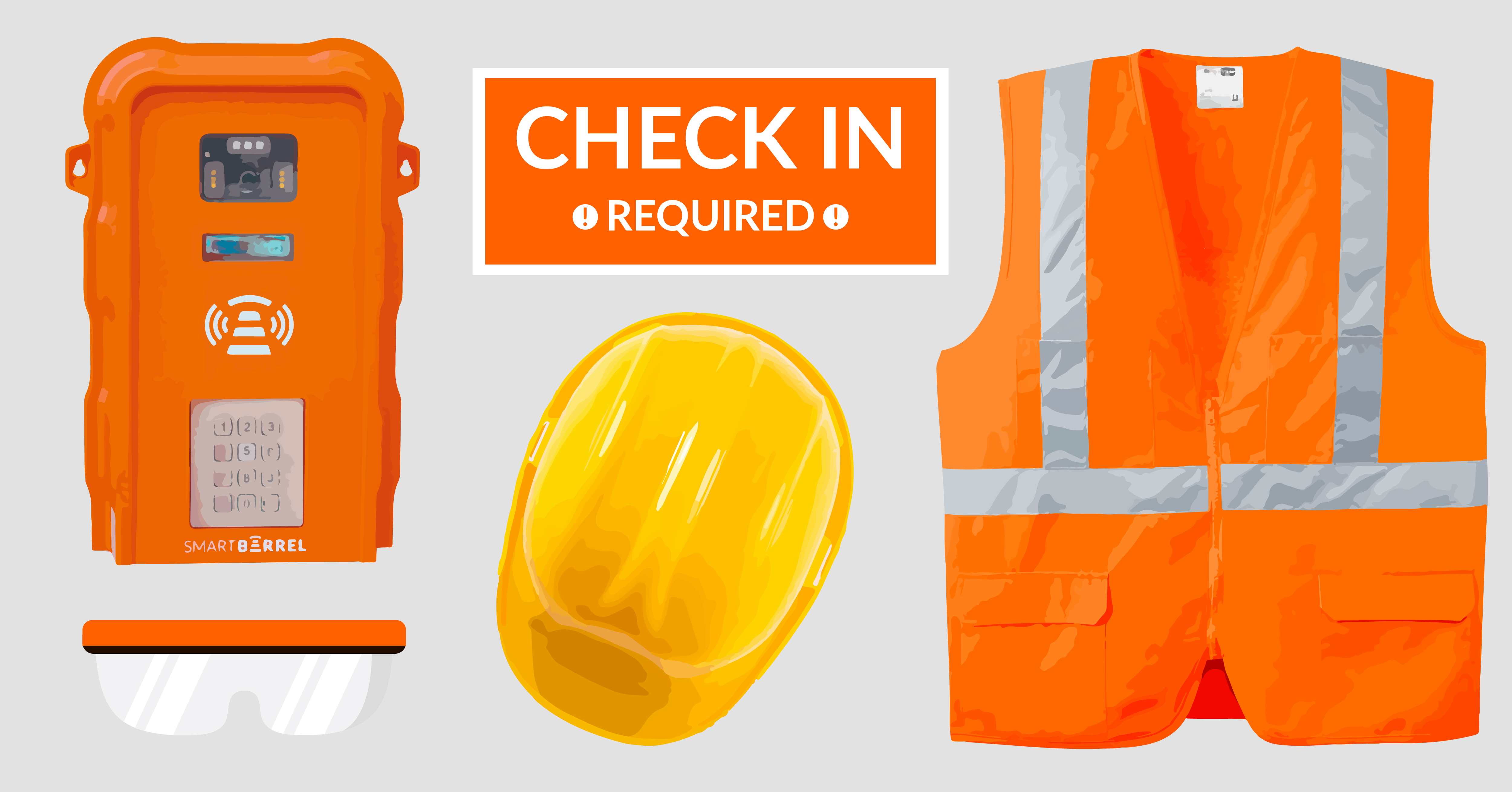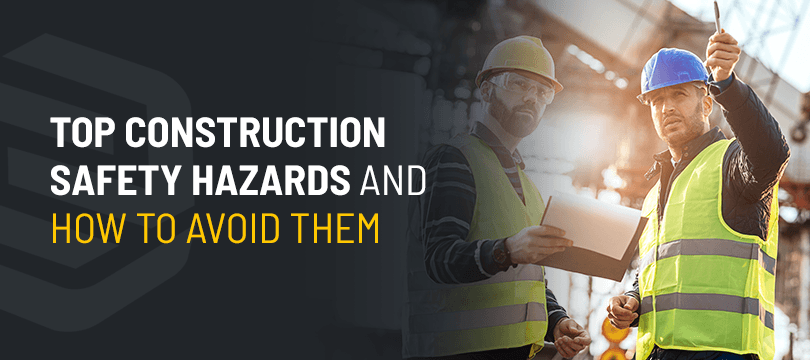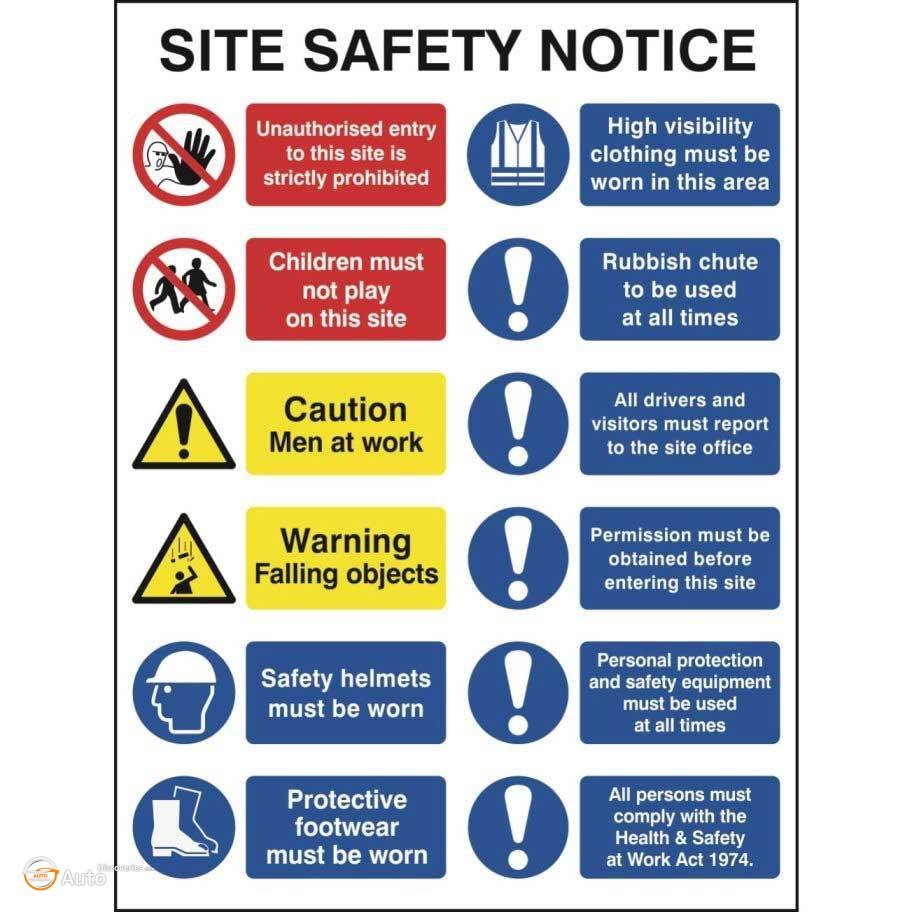- Follow Safety Regulations.
- Hold Regular Safety Meetings.
- Inspect the Site.
- Maintain Equipment.
- Wear Smart PPE.
- Prioritize Training.
- Creating a Positive, Safe Culture.
How can construction sites avoid risk?
- Minimise and manage risk.
- Site security.
- Safe work method assessment.
- Use clear signage throughout the site.
- Entry and exit points.
- Compliant chemical storage.
- Environmental conditions.
- First aid.
How can we prevent workplace hazards?
- Always be alert while on the job.
- Promote safety awareness and education.
- Be aware of musculoskeletal disorders (MSDs) and injuries (MSIs).
- Provide PPE.
- Maintain an orderly workplace and communicate effectively.
- Ensure everyone wear proper attire.
- Check for safety hazards.
What are the 4 major hazards in construction?
These presentations focus on the Big Four Construction Hazards – falls, electrocution, caught-in and struck-by. All training materials will cover the four hazards seen regularly on construction sites and will focus on the methods for the recognition and the prevention of these common hazards.
How can hazards be eliminated?
Hazards may be eliminated by changing how or where the work is done. For example, by eliminating a step the process that involves a hazardous material. They may also be eliminated by redesigning a process to eliminate the use of hazardous equipment, machines, tools, or materials.
How can I work faster in construction?





The heat isn’t the only safety concern on your jobsite this summer. Protect yourself with our six tips for avoiding common safety hazards. https://t.co/9hkrXRJomC.
— PeopleReady (@_PeopleReady) July 3, 2023
Why do construction workers work so slow?
Often, it's simply a result of the standard process. After all, when it comes to high-risk industries like construction, slow and steady is the way to go to maintain safety. Many other factors can affect construction timelines.
Frequently Asked Questions
How can I speed up a slow worker?
- Talk With the Employee. Start by listening.
- Teach Project Management Skills.
- Make Changes to Improve Your Employee's Focus.
- Provide Time-Saving Tools.
- Create a Feedback Loop.
How do I get started in construction?
Three basic ways to get started in the construction industry
Enroll for post-secondary training at a university, community college or technical institute and study for the construction career of your choice. Or, find a job as an entry-level construction worker and learn the skills you need on the job.How do you prepare a construction site?
- Evaluate the Site.
- Survey the Site.
- Develop the Site Design Plan.
- Create Site Access Points.
- Clear the Site.
- Install Drainage and Erosion System Controls.
- Grade and Compact the Site.
Which safety course is best for construction?
What does OSHA require on a construction site?
OSHA's construction standards require construction employers to have accident prevention programs that provide for frequent and regular inspection of the jobsites, materials, and equipment by competent persons designated by the employers. See 29 CFR 1926.20(b).
How do I get a SST card in NYC?
If you are new to the NYC construction industry, you must complete a 10-hour OSHA class before your first day on the job. You will then have six months to complete an additional 30 hours of SST and earn your SST Worker card.
Is OSHA training worth it?
Commitment to Safety
Whether you're an individual worker looking to boost your resume or a safety professional in an organization, adding OSHA 10 or 30 hour training to your curriculum is worth it. The completion of OSHA 10 and 30 hour training creates a groundwork for a safe work environment.
How do you train for safety?
- Identify Your Hazards.
- Control Your Hazards.
- Know Your Safety Training Regulations.
- Have a Method for Your Safety Training.
- Know Your Learning Objectives.
- Know Your Employees.
- Know and Acknowledge the “What's In It For Me?” Issue.
- Know About Active Learning.
What is the best safety certification for construction?
- OSHA Safety Certificate.
- EPA Amusement Operators Safety Certification (EPA)
- Certified Construction Professional (CCP)
- Certified Construction Manager (CCM)
- Registered Construction Inspector in Building.
- Certified Management Accountant (CMA)
- Residential Construction Certified (RCC)
What is the highest OSHA certification?
At the top of the hierarchy are the trainer cards which reflect the highest level of achievement and proficiency. Trainer card. Signifies authority to teach 10- and 30-hour outreach courses and receive OSHA student completion cards.
What are the 5 basic safety training?
The STCW Basic Safety Training qualification comprises five modules which take five days to complete. The modules are personal survival training, firefighting, first aid and CPR, personal safety and social responsibility, and proficiency in security awareness.
FAQ
- What is the most important thing in construction?
- Detailed and strategic planning is the most important aspect of successful construction project management. The more complex the project, the more planning will be required. A well-planned project maximizes efficiency and provides a step by step roadmap for completing the work on schedule and within budget.
- What are the five important issues in construction safety?
- 5 Important Issues in Construction Safety
- Educate the Workforce. For workers to perform safely, they must understand the hazards and risks they face on the job site.
- Look Out for Worker Well-Being.
- Understand the Project.
- Remember the Hierarchy of Controls.
- Employ Effective Safety Management.
- What is the goal of safety in the construction industry?
- Zero fatalities. These goals are implemented to control and prevent construction site failures which cause fatalities, injuries, illness, equipment damage, fire, and damage or destruction to property.
- Why is safety most important?
The main goal of safety and health programs is to prevent workplace injuries, illnesses, and deaths, as well as the suffering and financial hardship these events can cause for workers, their families, and employers.
- What is the most crucial part of building construction?
Acquiring land. The most crucial step in building construction is acquiring land for the project. The location should be well-suited for the project requirements. Before the land acquisition, it is best to conduct feasibility studies to ensure the land is strategically located and is free from land-related issues.
- How do you cover a construction site?
Exterior construction cover-up (also known as hoarding) usually consists of vertical sheets of plywood or metal fencing erected around construction sites to prevent pedestrians from being injured and also to prevent site entry by unauthorized personnel.
- How do you maintain a construction site?
- The following tips will help you and your staff to keep your construction site free from unsightly hazards.
- Clear Access Points.
- Clear Trash Every Day.
- Remove Unused Items.
- Check the Toilet Facilities.
- Utilize Chutes.
- Dust Control.
- Clean and Return Machinery.
- Stay Secure.
- What is the number one safety rule in construction?
Rule #1 Create Awareness
The biggest source of danger at a construction site is an ignorant worker. Before any worker gets down to work, they should be aware of the hazards and safety measures. By informing them about what could go wrong, workers become more alert.
- How do you stay safe on a construction site?
- 10 Construction Safety Rules
- Always wear PPE.
- Be mindful and follow signs.
- Provide clear instructions.
- Keep site tidy.
- Organize and store tools properly.
- Use the right equipment for the right task.
- Have an emergency response plan.
- Set up safeguards.
- How do you manage construction safety?
- 7 best practices to improve construction site safety
- Make safety a priority.
- Create a comprehensive site safety plan.
- Conduct regular jobsite safety training.
- Service and update equipment regularly.
- Keep open lines of communication.
- Document & track safety incidents.
- Work with your insurance provider.
How to avoid hazards in construction site
| What strategies would you employ to minimize the risk of accidents in a construction site? | Here are 5 simple ways you can stop injuries from occurring on your construction site:
|
| What are 10 safety rules? |
|
| What do you talk about in a construction safety meeting? | 8 Construction Safety Meeting Topics to Choose From
|
| How do you start a safety talk? | How To Start A Safety Talk
|
| What are some good safety topics for work? | Individual Safety
|
| What makes a good safety conversation? | Set a Good Example
The way you communicate also sets an example. Raising sensitive safety issues with skill, respect, and a caring attitude shows other workers how to do the same. Make sure that you accept constructive feedback well, ask for feedback often, and handle negative feedback with grace. |
| How can I make my construction site safer? | 7 Ways to Improve Construction Site Safety
|
| How do you make a building safer? | Improve Exterior Building Security
|
| How do I keep jobsite safe? | Job Site Safety Tips
|
| How do construction workers protect themselves? | Construction workers should always have the proper boots and adequate head protection with a safety helmet. Protective eyewear and gloves can also help protect against minor on-the-job injuries. Employees should always take care when moving or lifting heavy objects. |
- How can you make work safer?
- Following are six ways to ensure a safe workplace and promote a strong safety culture.
- ELIMINATE POTENTIAL HAZARDS.
- MAKE SURE ALL WORKERS ARE PROPERLY TRAINED.
- ENSURE WORKERS HAVE THE PROPER EQUIPMENT.
- PROVIDE VISUAL SAFETY AIDS AND MESSAGES.
- CREATE A SAFETY COMMITTEE – AND HOLD MONTHLY SAFETY MEETINGS.
- MAKE SAFETY FUN.
- Following are six ways to ensure a safe workplace and promote a strong safety culture.
- What is the safe construction?
Answer: safe construction practices are those practices which should be followed in disaster prone areas while constructing houses or any type of buildings so as to avoid so much damage at the time of a disaster.... ... Safer building procedures can minimize thevulnerabilities and risks in many areas.
- Which are the house most vulnerable to landslide?
Houses that are most affected by landslides are the ones that are constructed in the existing landslide areas. House that are built on the steep mountain slopes, near the valley or on the foot hills of the mountains are also most affected during a landslide.
- What are the three requirements for a safe structure?
The 3 “S” are Safety, Space and Structure, meaning that the planned process should provide a safe working environment to construction workers, sufficient space to perform construction activities and the required sequence of construction operations and project phases.
- How do I know if my house is prone to landslides?
Landslide Warning Signs
New cracks or unusual bulges in the ground, street pavements or sidewalks. Soil moving away from foundations. Ancillary structures such as decks and patios tilting and/or moving relative to the main house. Tilting or cracking of concrete floors and foundations.
- How can construction risks be prevented?
Site managers can protect workers by enforcing the use of protective gear and assigning a safety monitor to conduct a risk assessment. They will help identify fall hazards and warn workers when they may be at risk of a fall hazard or potentially putting others at risk.
- What are your rights when it comes to nearby construction?
Most state and city laws specify that residents have a right to quiet enjoyment of their home, which includes limiting excessive noise from nearby properties under construction.
- What can be done to a building to make it safer?
- Improve Exterior Building Security
- Keep landscaping criminal-proof. The less overgrowth you have, the fewer hiding places people have, too.
- Install motion detector lights and cameras.
- Have security gates or fences.
- Educate your tenants on building security.
- Use high-security keys.
- Keep your lighting bright.
- Install cameras.
- Improve Exterior Building Security
- How do you control a construction site?
- 11 ways to keep your construction safe: 1. Start with safety training
- Minimise and manage risk.
- Site security.
- Safe work method assessment.
- Use clear signage throughout the site.
- Entry and exit points.
- Compliant chemical storage.
- Environmental conditions.
- First aid.
- 11 ways to keep your construction safe: 1. Start with safety training
- What are the 5 principles of risk management in construction?
The 5-step construction risk management process
At its core, the construction risk management process includes identifying risks, assessing potential impact, controlling them, financing potential costs, and seeking to recover damages when a loss occurs.

